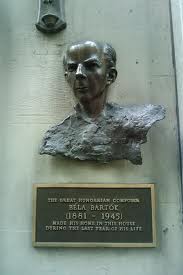Béla Bartók (1881-1945) completed the sketches for his viola concerto shortly before his death in New York from leukemia in 1945. He had been commissioned to write the concerto by William Primrose, the great Scottish violist. Bartók wrote to Primrose shortly before his death that the concerto had been fully sketched out and only required a few weeks to be orchestrated, but he died before this work could be completed. At the request of the Bartók family, it fell to Tibor Serly, Bartók’s close friend and colleague, to write the orchestrations and finalize the concerto for publication. It took four years for Serly to finish this task, owing largely to the fragmentary nature of Bartók’s sketches, which were written on 13 unordered pieces of paper. The concerto was premiered by Primrose in 1949. While a number of subsequent revisions have been done (including one by Peter Bartók, the composer’s son), the original Serly version has remained a beloved staple of the viola literature ever since.
The concerto has three movements, played without a break. The opening Moderato begins with a lyrical four-bar theme in the solo viola, accompanied by ‘cello and bass. The theme is taken up by the winds in turn, and appears several times in the course of the movement. A contrasting triplet-based theme appears twice, accompanied by syncopations in the orchestra.
A short declamatory section (lento parlando) and a bassoon solo serve as a bridge to the short second movement. Titled adagio religioso, it is a quiet sustained slow movement, with a short agitated middle section featuring woodwind trills. A sudden solo viola accelerando brings us to a lively allegretto, punctuated by horns and timpani.
The rollicking last movement is based on a Rumanian Scottish-influenced melody appearing in contrast. Brilliant viola bring this work to a satisfying conclusion.
Concerto for Viola and Orchestra
Sz. 120
Composed in 1945
By Bela Bartok






